This is my very first design for a 16mm extended play film transport. I apologize for the quality of these pictures, as my scanner is not behaving, so I aimed my digital camera at the photos to obtain these images.
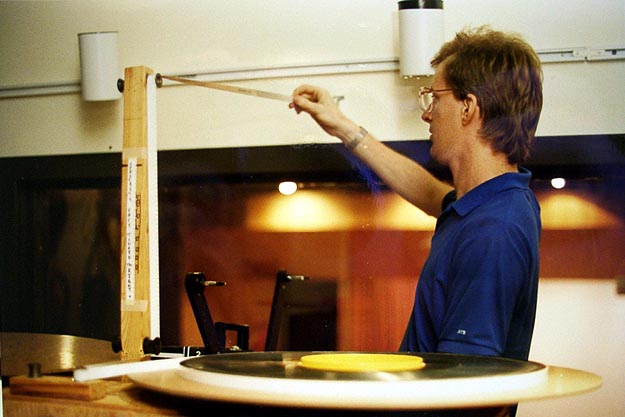
This is Andrew (one of the projectionists) threading a film.
The design is extremely simple. Two horizontal decks made out of
1/4 inch masonite sit side by side and the film feeds from the right and
takes up on the left. Direct drive motors were used so a clutch would
not be necessary and tension would be incredibly smooth. As you can
see, Andrew turned the feed deck's motor "on" before he started to thread.
This is why the film is not sagging during the threading process.
The film pulls off of the side of the roll, around a roller, then twists
to another roller that shoots it up to the top of the post, where it travels
to a roller mounted in front of the projector on the wall (barely visible
behind his hand).
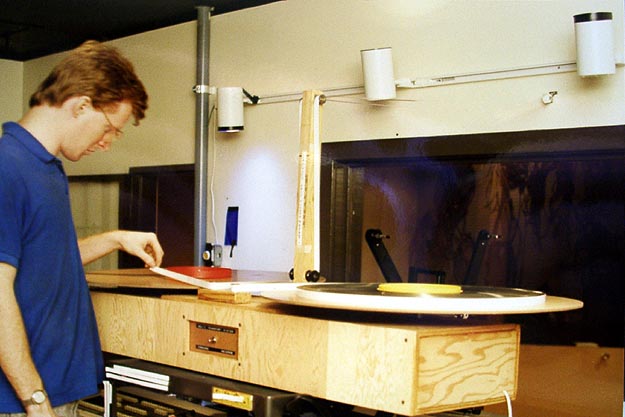
Once he threads past that roller, he bypasses the projector and returns directly to the post, where the film travels back downward in exactly the same threading path as the supply roll went through and onto the takeup platter.
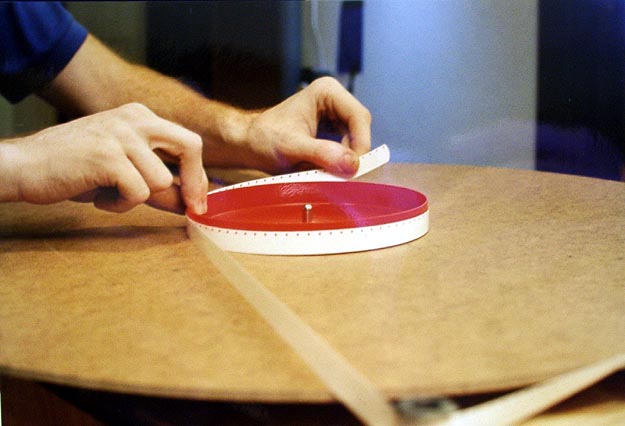
It was always our policy to never actually tape down the head leader to the takeup hub, but instead to wrap it around once and let it grab on it's own. This way the film would not snap hard during the rewind cycle.
Note that the hubs are nothing more than 400 foot 16mm plastic canisters with a hole drilled in the center!
The spindles of the motors actually had 16mm shafts mounted on them
(square on the bottom, round on the top as you can see protruding through
the hub). This allowed us to remove one flange of a 2000 foot Eiki
auto-takeup reel (the one with 8 screws holding it together) and turn it
upside down on the shaft, where it was left permanently as a deck support.
This way the masonite decks could simply be slid over the shafts and the
weight of the decks coupled with the fact that the "rough side" of the
masonite was "down" would grab the 2000 foot reel and prevent the deck
from slipping.
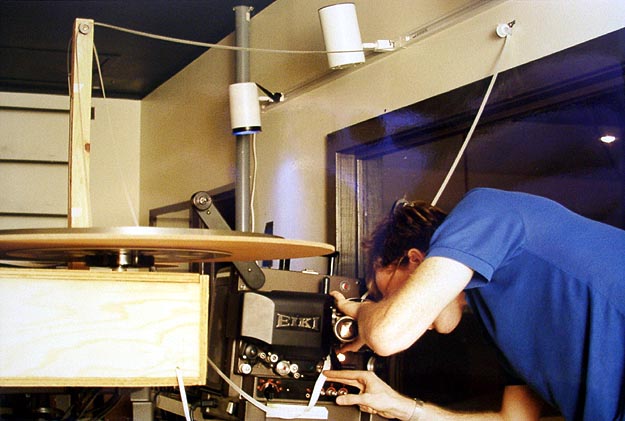
Once the film has been threaded through the transport, the projectionist threads the projector. You can see he has the motors turned off in this picture, as the film is sagging. Also note the half Eiki auto-takeup reel on the underside of the masonite deck.
By the way, that roller you see on the wall is nothing more than a drawer roller found at a hardware store. These spin extremely freely and as such will not scratch the film. Unfortunately the last time I went to buy them they had been made skinnier, such that only 8mm film could be used on them. You will have to check it out the current options for yourself.
Later models of transports (and finally an actual "platter") used arms
that I made that bolted to the front and rear of the projector so mounting
rollers on the wall was unnecessary.
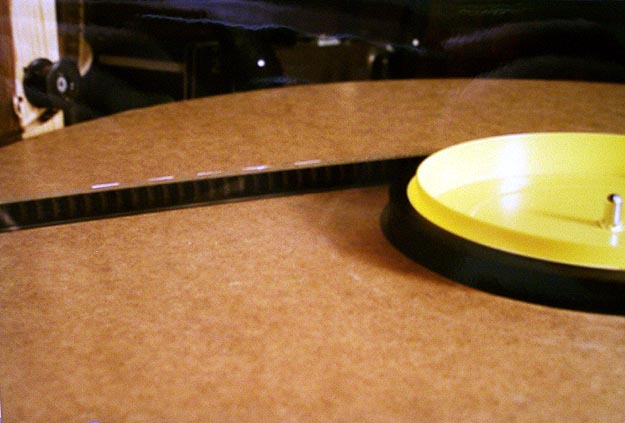
Here is a shot of the film paying out. For some reason the "end credits" had been marked on the edge, I guess to alert the projectionist.
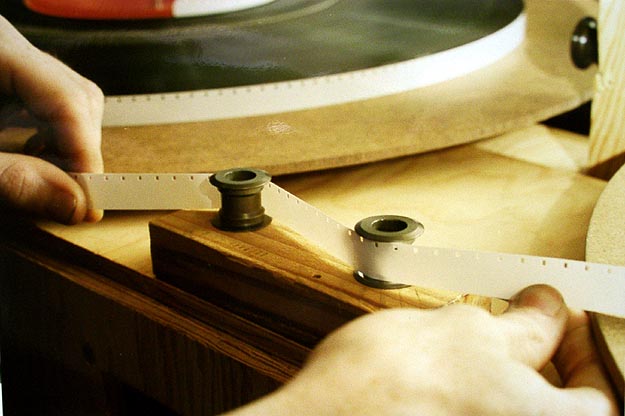
To rewind, simply place the film in between the two rollers and turn on the motors. The feed deck had a higher torque motor (not by much) so that when both motors were turned on, a nice and smooth tightly wound roll was obtained. You could also turn on the feed deck's motor if you needed for whatever reason to run the projector in reverse. We always just left it off, as there was just enough natural drag to keep the film from overfeeding during projection.
It took about 10 minutes to rewind a 2 hour movie.
The longest movie we ever ran on this system was Dances With Wolves and it ran to about 1/4 inch from the edge of the deck. (That was on a later "platter" model that fed the film out from the center, thus not requiring the film to ever be rewound...but all versions of the film transports I made in college used the same decks.)
The "stackable" design that I made after this one only took up half of the space this one did. Plus in one configuration the transport became the projector stand and the film fed up to the projector and back down underneath to the takeup deck. Somewhere in the mass of photos I have shots of those designs (admittedly much better than this one). Still this gives you an idea of how you can build a 16mm transport inexpensively.
-Brad Miller